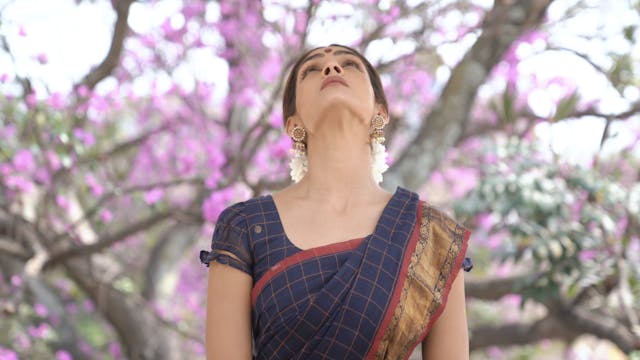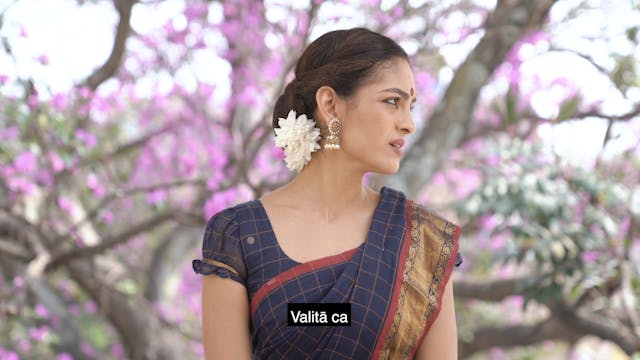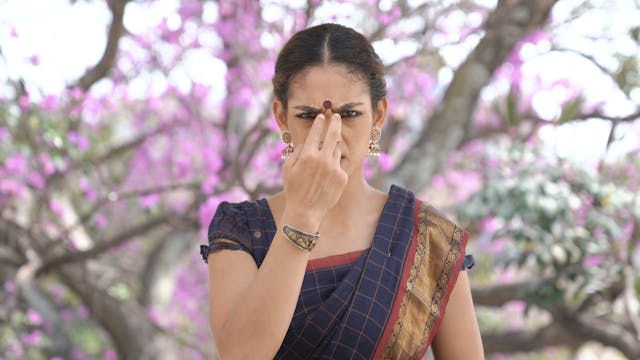The eye movements are considered one of the Mukhaja, or gestures of the face according to the Nātyasāstra.
The movements are used primarily to communicate meaning in the context of gesture.
Please refer to the Shloka below for pronunciation. Please note that the separate movements of the head when put together in a Shloka form 'Sandhis', or compound words in the Sanskrit language. Words like 'ca', 'thatha', mean "and", "also". The separate words for each movement are also given below the shloka.
Sama sāći anuvrttetu ālokita vilōkite
pralokitollokite ćāpi avalokitameva ća
Sama
sāći
anuvrtta
ālokita
vilōkita
pralokita
ullokita
avalokita
Up Next in Natyashastra: Angas & Upangas
-
Grīva bheda Introduction
The neck movements are considered one of the Mukhaja, or gestures of the face according to the Nātyasāstra.
The movements are used primarily to communicate meaning in the context of gesture.
-
Grīva bheda Shloka
The neck movements are considered one of the Mukhaja, or gestures of the face according to the Nātyasāstra.
The movements are used primarily to communicate meaning in the context of gesture.
Please refer to the Shloka below for pronunciation. Please note that the separate movements of the neck ...
-
Bru bheda Introduction
The eyebrows are considered one of the Mukhaja, or gestures of the face according to the Nātyasāstra.
The movements are used primarily to communicate meaning in the context of gesture.


